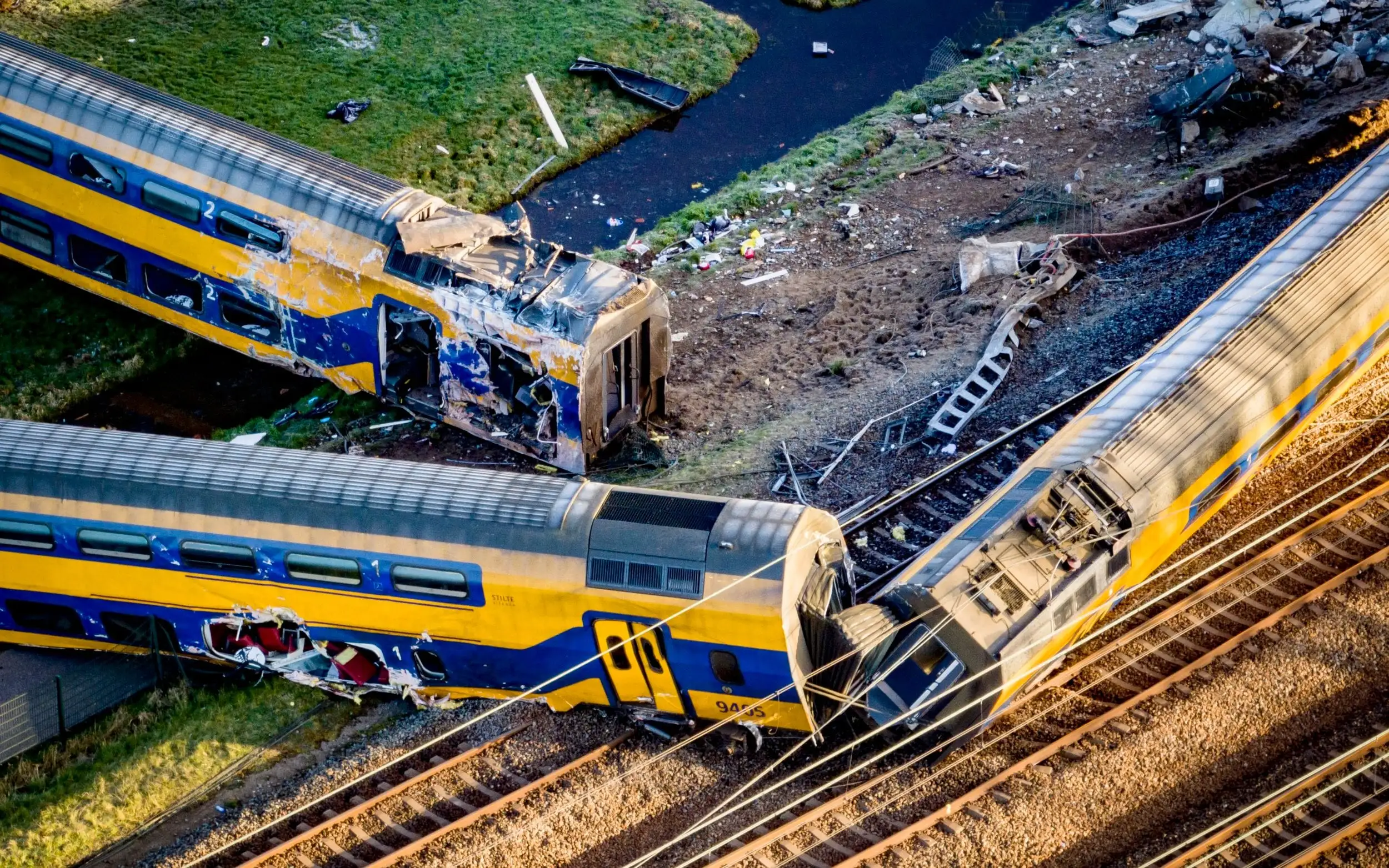Amsterdam Train Derailment: On April 4th 2023, a horrific train crash occurred near Voorschoten in the Netherlands, between The Hague and Amsterdam. A passenger train collided with a construction crane obstructing its track, leading it to derail and crash into a field; unfortunately the operator of the crane died as well as 30 people being injured, 19 being hospitalized – it was the worst crash seen on Dutch railways for years and brought up concerns regarding its oversight and safety.
What happened on that fateful day?

At about 03:25 local time (01:25 GMT), an accident took place when a freight train operated by DB Cargo and pulled by a DBAG Class 189 locomotive collided with a road-rail crane used for repairs to two of four railway tracks near Voorschoten. The locomotive was severely damaged but not derailed, while the crane landed directly in its path and was struck by passenger train NS VIRM unit 9405 operating between one and five minutes after first impact. The passenger train was travelling at an estimated 85 mph when it collided with a crane, derailing all four vehicles of its fleet and sparking a small fire that quickly subsided in one carriage of its rearmost carriage en route from Leiden to Den Haag in South Holland.
How did the emergency services and the public respond?
As it is believed that over 50 people were likely injured, and moreover a GRIP 3 situation has been declared; which denotes an incident which threatens the well-being of a large number of people within one municipality. Emergency services quickly arrived on scene to evacuate passengers and crew from both trains, with reports that both drivers had survived without injuries; one being unharmed while two conductors on both were reported as having experienced multiple broken bones during the incident. Residents provided medical aid for passengers suffering minor injuries. Leiden Central station, situated between The Hague and Amsterdam, was closed due to extensive track damage which rendered train service unviable in this region for days – though residents assisted those injured as much as they could.
“This accident is heartbreakingly tragic,” stated Voorschoten Mayor Nadine Stemerdink. “My thoughts go out to those impacted and their families.
Police and the Dutch Safety Board launched an investigation to ascertain why two trains collided with a crane that should have been on one of two tracks taken out for maintenance, causing collision. King Willem-Alexander visited the site after thanking residents who opened up their homes to provide treatment to passengers who did not require hospital care.
“Our hearts go out to those affected by the tragic train accident in Voorschoten and their loved ones,” reads a statement issued by the Royal House. “Many are in fear and uncertainty; we feel for them all and deeply sympathise with all.”
Prime Minister Mark Rutte expressed his sincerest condolences on behalf of all his constituents.
What were the causes and the consequences of the accident?
At this stage, it remains unclear exactly what caused this accident, although preliminary findings have already come forward. On 5 April 2023, ProRail CEO John Voppen noted that it appears likely that the freight train had been traveling on its intended track. On 7 April it was reported that a crane had arrived early at its intended site. Traffic had to be stopped so it could be placed onto track – and when asked at 03:23 for permission it had to wait 10 minutes until this would happen; by 03:29 power had gone out at Voorschoten.
The accident has ignited an in-depth dialogue over the safety and regulation of the Dutch rail network, one of Europe’s busiest and most complex. Experts have pointed out deficiencies in coordination and communication among ProRail, NS, DB Cargo and their contractors; others questioned adequacy of safety measures and contingency plans should emergencies arise; furthermore it has highlighted a need for additional investment and modernization within specific maintenance and repair areas of infrastructure.
The accident has had a lasting impact on victims and their families as well as on society at large. Many have suffered physical and psychological trauma; some could develop long-term disabilities; it has disrupted normal operation of the rail network with delays, cancellations and inconvenience for thousands of commuters and travellers; furthermore it has shaken trust in one of the main modes of transport in the Netherlands – rail.
Conclusion
The Amsterdam train derailment was an unfortunate tragedy that claimed one life and injured many more, and revealed flaws and weaknesses within the rail system of the Netherlands. As a result, an investigation has been undertaken and public debate launched regarding ways to enhance rail network safety and efficiency; its aftermath also serves to remind us how essential rail services are to society and economy alike and that its users and workers must be supported and protected accordingly.
Stay tuned to Centralfallout for the latest scoops and updates of Latest News, Trending News, Technology News, World News and Entertainment News.


